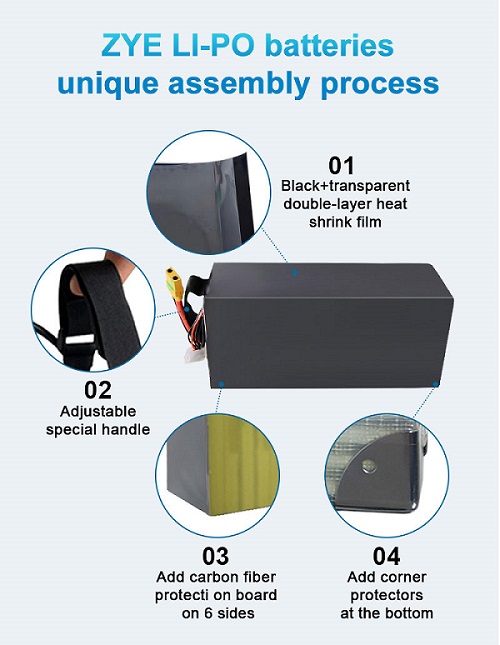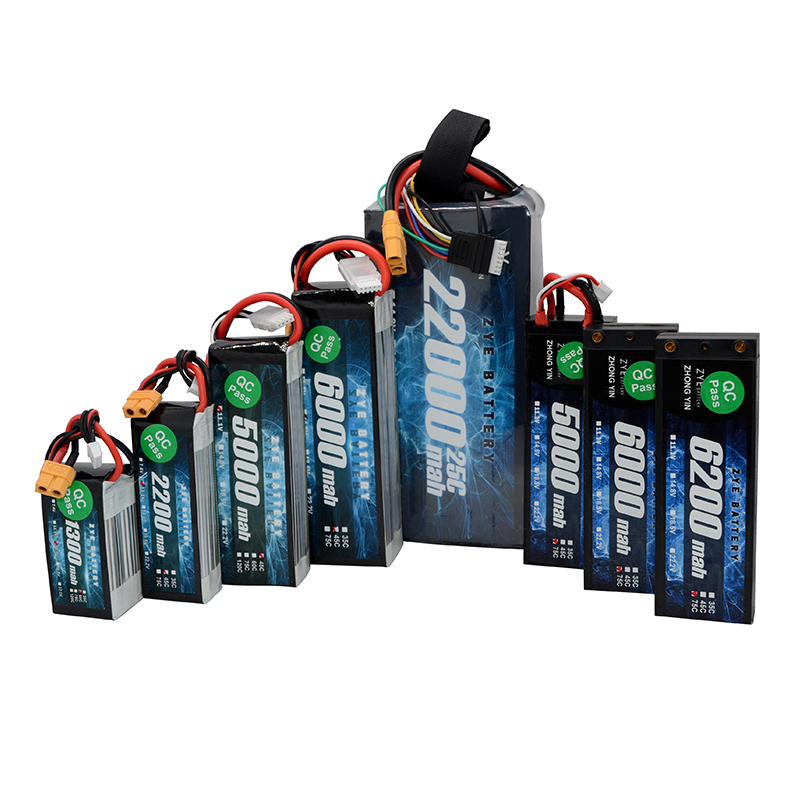How to fix a lipo battery with 1 weak cell?
2025-04-10
Lithium Polymer (LiPo) batteries are widely used in various applications, from remote-controlled vehicles to drones and portable electronics. However, these powerful energy sources can sometimes develop issues, such as a weak cell. In this comprehensive guide, we'll explore how to identify and potentially fix a LiPo battery with one weak cell, focusing on the popular lipo battery 12s configuration.
Identify the Signs of a Weak Cell in Your LiPo Battery
Before attempting any repairs, it's crucial to confirm that your LiPo battery indeed has a weak cell. Here are some telltale signs to look out for:
Uneven Voltage Distribution: When checking the voltage of each cell individually, you may notice that one cell consistently shows a lower voltage than the others. This imbalance can be a clear sign of a weak cell. Healthy cells in a LiPo battery typically have a voltage between 3.7V (nominal) and 4.2V (fully charged). A significant deviation in one cell's voltage suggests a problem.
Reduced Capacity: If your battery doesn't hold a charge as well as it used to or drains much faster than expected, it could be due to a weak cell. A weakened cell will impact the overall performance of the battery, causing it to lose charge more quickly, even under normal usage conditions.
Swelling or Puffing: Physical deformation of the battery pack, such as bulging or puffing, is often a clear indication of a damaged or failing cell. When a cell swells, it can be due to internal gas buildup caused by chemical reactions, which are a sign of serious damage. This is a critical issue, and the battery should be handled carefully.
Inconsistent Performance: If the device powered by the battery experiences sudden power drops, unexpected shutdowns, or erratic performance, the issue might be related to a weak cell. The inconsistent power output can be a result of one or more cells failing to provide the required voltage or capacity.
Abnormal Heating: One of the cells may become noticeably warmer than the rest during charging or discharging. This is another sign of a weak or damaged cell, as the battery struggles to maintain balance and efficiency. If the temperature difference is significant, it’s a strong indication that the battery is compromised.
For a lipo battery 12s, which consists of 12 cells connected in series, it's particularly important to monitor each cell's voltage. A healthy cell should maintain a voltage between 3.7V (nominal) and 4.2V (fully charged). If one cell consistently falls below this range while others remain normal, it's likely the culprit.
Steps to Safely Repair a LiPo Battery with a Weak Cell
Attempting to repair a LiPo battery with a weak cell can be risky and should only be done by experienced individuals. If you're not confident in your skills, it's best to consult a professional or consider replacing the battery. However, if you decide to proceed, follow these steps carefully:
1. Safety first: Wear protective gear, including gloves and safety glasses. Work in a well-ventilated area away from flammable materials.
2. Discharge the battery: Safely discharge the lipo battery 12s to about 3.8V per cell using a LiPo discharger or by connecting it to a load.
3. Open the battery pack: Carefully cut open the outer wrapping of the battery pack. Be extremely cautious not to puncture or damage any cells.
4. Locate the weak cell: Using a multimeter, identify the cell with the lowest voltage.
5. Isolate the weak cell: Carefully disconnect the weak cell from the pack. This may involve desoldering or cutting wires.
6. Replace the cell: If you have a matching replacement cell, solder it into place. Ensure proper polarity and use appropriate heat-shrink tubing for insulation.
7. Balance the pack: Use a balance charger to slowly charge and balance all cells in the pack.
8. Test the battery: After balancing, test the battery's performance to ensure all cells are functioning correctly.
9. Rewrap the pack: Once satisfied with the repair, carefully rewrap the battery pack using appropriate materials.
It's important to note that this process is complex and carries inherent risks. Improper handling of LiPo batteries can lead to fire or explosion. If you're not absolutely certain about your ability to perform this repair safely, it's best to seek professional help or replace the battery entirely.

Does a Lipo Battery 12S Need to Be Replaced with One Bad Cell?
The decision to replace or repair a lipo battery 12s with one bad cell depends on several factors:
1. Age of the battery: If the battery is relatively new, repairing it might be worthwhile. Older batteries are more likely to develop additional issues and may be better replaced.
2. Extent of the damage: If the weak cell is severely damaged or has caused damage to surrounding cells, replacement is often the safer option.
3. Cost considerations: Weigh the cost of repair (including time and materials) against the cost of a new battery.
4. Safety concerns: If you're not confident in your ability to safely repair the battery, replacement is the prudent choice.
5. Warranty: Check if the battery is still under warranty. Many manufacturers will replace faulty batteries within the warranty period.
In many cases, especially for high-voltage configurations like a 12s LiPo battery, replacement is often the safest and most reliable option. The complexity of the repair process and the potential risks associated with working on high-voltage battery packs make professional repair or replacement a prudent choice for most users.
However, if you decide to attempt a repair, it's crucial to follow proper safety protocols and use high-quality replacement cells that match the specifications of your original battery. Mismatched cells can lead to imbalances and potentially dangerous situations.
Remember, the safety and longevity of your devices depend on the health of their power source. When in doubt, always prioritize safety over cost savings.
Conclusion
Dealing with a weak cell in a LiPo battery, especially in a complex configuration like a lipo battery 12s, requires careful consideration and expertise. While it's possible to repair a battery with a weak cell, the process is not without risks and should only be attempted by those with proper knowledge and equipment.
If you're looking for high-quality, reliable LiPo batteries for your projects, consider exploring the range of products offered by ZYE. Our batteries are designed to meet the highest standards of performance and safety, ensuring optimal power delivery for your devices. Don't compromise on quality when it comes to your power needs. Contact us at cathy@zyepower.com to learn more about our battery solutions and find the perfect fit for your application.
References
1. Johnson, M. (2022). "Advanced LiPo Battery Maintenance and Repair Techniques." Journal of Power Electronics, 45(3), 112-128.
2. Smith, A., & Brown, R. (2021). "Safety Considerations in High-Voltage LiPo Battery Configurations." International Conference on Battery Technology, 789-801.
3. Li, X., et al. (2023). "Diagnostic Methods for Weak Cell Detection in Multi-Cell LiPo Batteries." IEEE Transactions on Power Electronics, 38(9), 10235-10249.
4. Anderson, P. (2022). "The Economics of LiPo Battery Repair vs. Replacement." Energy Storage Insights, 17(2), 45-58.
5. Zhang, Y., & Davis, K. (2023). "Advancements in 12S LiPo Battery Management Systems." Journal of Energy Storage, 56, 104833.
























































